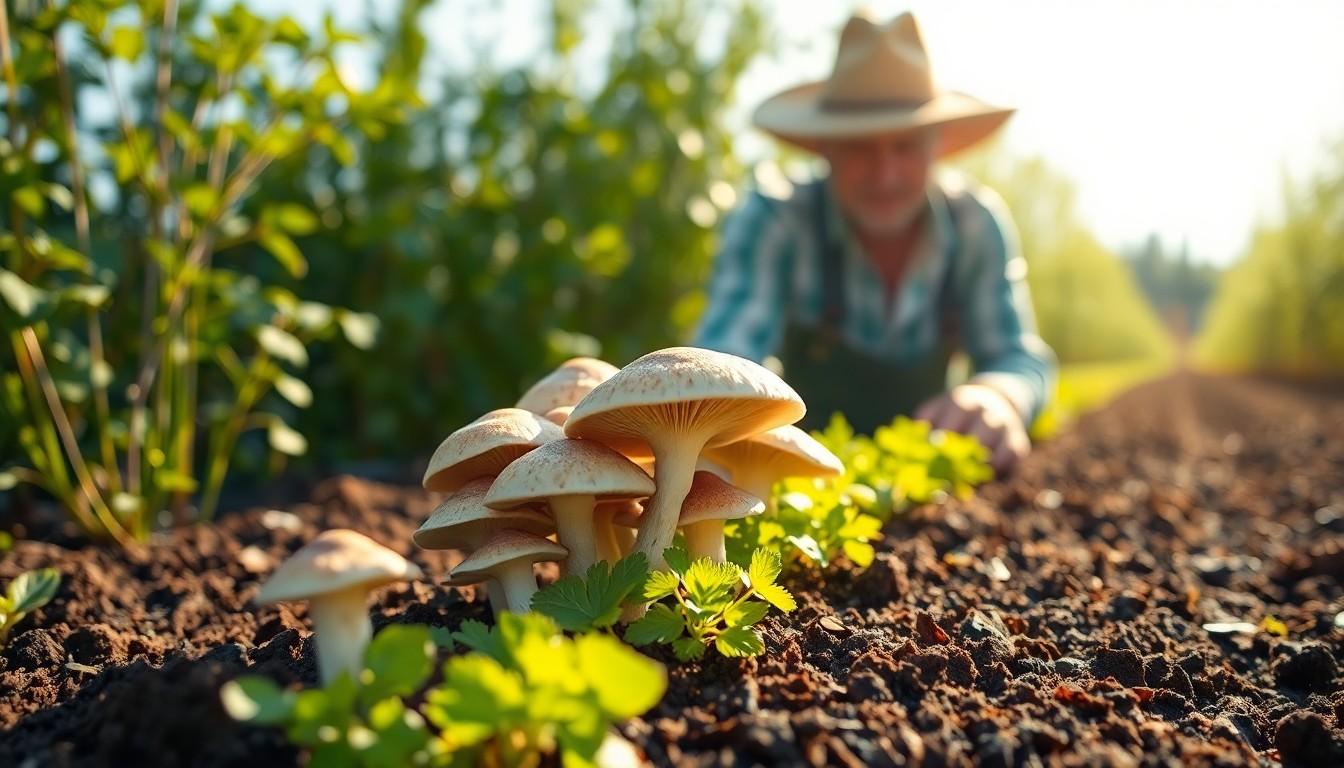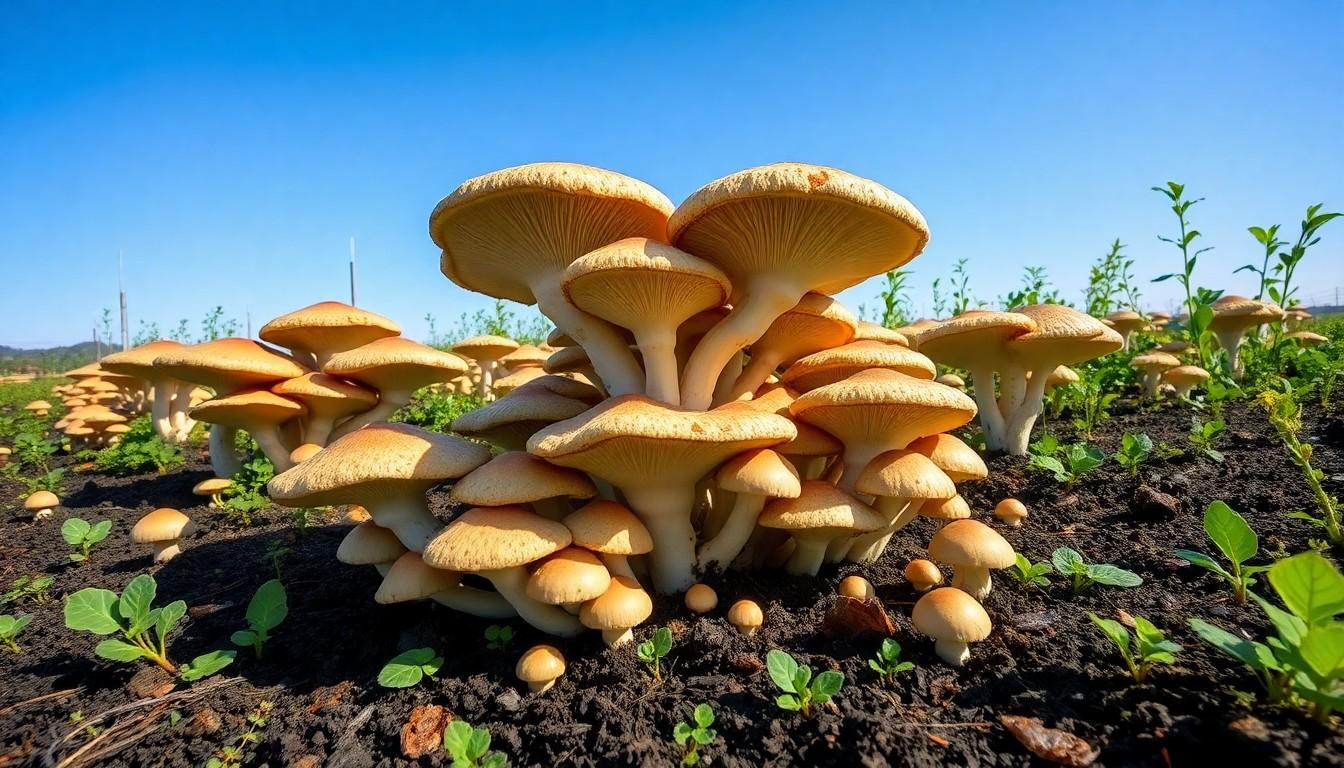In a world where sustainability is the new black, organic mushroom farming is stepping into the spotlight like a fungi superstar. These little fungi not only add flavor to gourmet dishes but also play a heroic role in cleaning up our planet. Yes, you heard that right! Mycoremediation, the magical process where mushrooms help detoxify soil and water, is turning heads and raising eyebrows.
Organic Mushroom Farming and Mycoremediation
Organic mushroom farming encompasses sustainable practices, focusing on cultivating mushrooms without synthetic pesticides or fertilizers. Various types of mushrooms, including shiitake, oyster, and lion’s mane, thrive in this environment, providing culinary and health benefits.
Mycoremediation employs mushrooms in environmental cleanup efforts. These fungi support the breakdown of pollutants, improving soil and water quality. Some species can absorb heavy metals or degrade organic contaminants, making them a valuable tool for ecological restoration.
Farmers often use agricultural waste, like straw and coffee grounds, as substrates for growing mushrooms. This process reduces waste while providing nutrients for the mushrooms. By implementing organic methodologies, growers contribute to a circular economy and promote sustainable agriculture.
The advantages of mycoremediation extend to urban environments, where contaminated sites can benefit from fungal intervention. In particular, studies show that certain mushroom species can effectively remediate toxic compounds, resulting in safer spaces for communities.
Both organic mushroom farming and mycoremediation align with the principles of sustainability. Each practice reduces environmental impact while offering tangible benefits to health and biodiversity. Integrating these methods supports the growing demand for eco-friendly food production and environmental stewardship.
Benefits of Organic Mushroom Farming

Organic mushroom farming yields significant sustainability benefits. It promotes healthier ecosystems while providing tasty ingredients for various dishes.
Environmental Benefits
Organic mushroom farming contributes to soil health and biodiversity. By using agricultural waste as growing substrates, farmers reduce landfill waste. Mushrooms play an essential role in mycoremediation, breaking down toxins and pollutants in soil and water. Certain species absorb heavy metals, aiding in urban site remediation. Consequently, this farming method enhances environmental quality, leading to cleaner habitats and improved public health.
Nutritional Advantages
Organic mushrooms offer enhanced nutritional profiles compared to conventionally grown varieties. They’re rich in vitamins D and B, essential minerals, and antioxidants. Regular consumption supports immune function and may reduce inflammation. Moreover, varieties like shiitake and lion’s mane contain compounds believed to improve cognitive performance. Incorporating these mushrooms into diets promotes health while offering unique culinary experiences.
Mycoremediation: A Sustainable Solution
Mycoremediation utilizes the natural processes of fungi to detoxify contaminated environments. Effective mushroom species target specific pollutants, providing a powerful tool for ecological restoration.
How Mycoremediation Works
Mushrooms break down harmful chemicals through enzymatic processes. Some species can absorb heavy metals, while others decompose organic pollutants. Their mycelium spreads throughout the soil, forming networks that enhance nutrient cycling. Successful implementation of mycoremediation often leads to improved soil structure and fertility. Understanding the specific fungi and their interactions with contaminants enables targeted remediation efforts, which maximize environmental benefits.
Applications in Environmental Cleanup
Urban sites benefit significantly from mycoremediation. Contaminated soil and water often require innovative solutions. Fungi effectively digest petroleum products, plastics, and pesticides present in polluted areas. Many organizations utilize mushroom cultivation to restore brownfields and other degraded environments. Communities gain safer public spaces, showcasing the transformative power of fungi in ecological restoration. Additionally, integrating mycoremediation into agroecosystems supports sustainable land management practices, providing comprehensive environmental solutions.
Challenges in Organic Mushroom Farming
Organic mushroom farming presents various challenges that require attention to sustain its growth. Key issues include pest management and market accessibility.
Pest Management
Pest management poses significant difficulties for organic mushroom farmers. Organic methods often rely on natural predators and non-synthetic treatments. These strategies may be less effective than conventional chemical pesticides, leading to infestations that threaten yields. Controlling pests like insects and fungi becomes crucial, as they can devastate crops if not addressed promptly. Farmers need to monitor regularly and adopt integrated pest management techniques. Farmers benefit from training in pest identification and control measures, improving overall productivity and sustainability.

Market Accessibility
Market accessibility presents an additional hurdle for organic mushroom growers. Establishing connections with local markets can be challenging, as demand varies among consumers. Competing with conventional mushrooms sometimes hampers organic farmers due to price differences. Educating consumers on the benefits of organic options helps to build a dedicated customer base. Online platforms and farmers’ markets offer potential avenues for growth. Distributing products effectively to reach target audiences increases visibility and sales opportunities. Strengthening relationships with retailers and restaurants supports better access to wider markets.
Future Trends in Organic Mushroom Farming and Mycoremediation
Emerging technologies in organic mushroom farming enhance production efficiency and environmental sustainability. Innovations such as automated systems for monitoring growth conditions lead to better yields and resource management. Blockchain technology offers transparency in supply chains, fostering consumer trust and encouraging local sourcing.
Technological advancements in mycoremediation expand its applicability across various contaminated environments. Researchers are developing enhanced mushroom strains with improved capabilities to absorb heavy metals and degrade harmful chemicals. These strains show promise for deployment in urban areas facing pollution challenges.
Collaboration between organic farmers and environmental scientists strengthens the impact of these practices. Joint efforts aim to create integrated systems that optimize both mushroom production and soil health. Educating growers about bioremediation techniques enables them to incorporate these methods into their farming practices.
Market demand for organic products continues to rise, influencing mushroom farming strategies. Consumers increasingly prefer sustainably sourced produce, creating opportunities for organic growers. Community-supported agriculture (CSA) models expand, allowing consumers to access fresh, locally grown mushrooms while supporting farmers.
Advocacy for regulatory frameworks promoting mycoremediation grows, as stakeholders highlight its benefits. Local governments might integrate these practices into urban planning initiatives, promoting green technologies for environmental restoration. Increased awareness could lead to more funding for research on the effectiveness of fungi in healing ecosystems.
Finally, the multifaceted approach of combining organic mushroom farming with mycoremediation represents a crucial trend in sustainable agriculture. This synergy not only revitalizes soil and waterways but also satisfies consumer demand for healthy, locally sourced food. Investing in these areas paves the way for a more sustainable future in both agriculture and environmental management.

